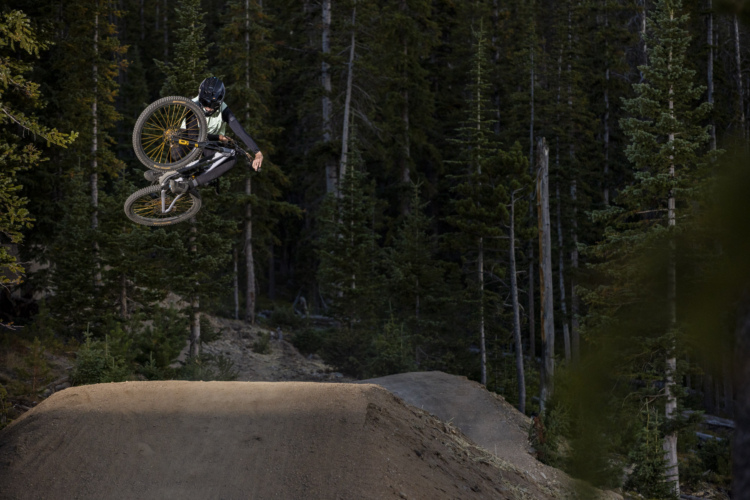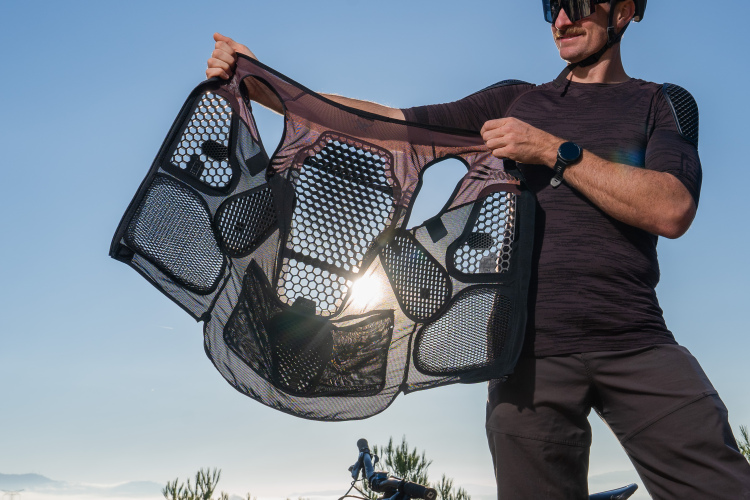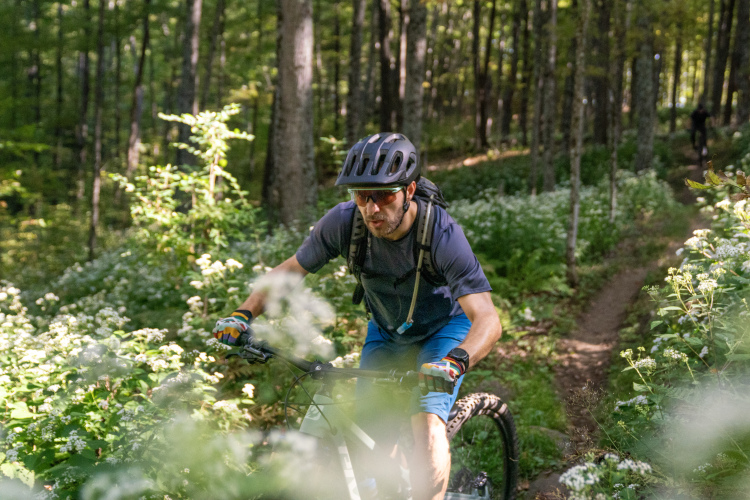
Updated July 2, 2024: We’ve re-worked this article to accurately reflect COSMBA’s contribution to this project.
A popular mountain biking destination in the Colorado Springs area has gone through a recent face lift. The North Cheyenne Canon Park received Colorado Spring’s first entirely double black diamond trail, a completely new climbing trail, and a wooden feature to keep things running smoothly.
However, the story goes back much further than when trail work began a few months ago or when proposals were given the green light a handful of years ago. These new trails have been a decade in the making for Colorado Springs.

Colorado Springs city planning
Cory Sutela is the Executive Director for Medicine Wheel Trail Advocates (MedWheel), a local trail organization that has been around since 1991. Sutela got involved in 2005 as a volunteer, eventually stepping into the director role in 2019.
“We were heavily involved with the 2014 city parks system master plan, which is where the seeds for this project were planted,” Sutela told us. There was a need to identify modern, gravity-driven mountain bike trails, and Colorado Springs stepped up to the plate.
“Since then, every city of Colorado Springs individual master plan has considered the mountain bike experience, including in Ute Valley Park, Austin Bluffs, and the recently approved Blodgett Open Space plan,” Sutela said.
The “master plan” Sutela refers to is Colorado Springs’ Park System Master Plan, where the language clearly supports the area’s growth of mountain bike recreation. Park designers wrote in the 2014 plan:
Some areas may be considered for implementation of new design strategies or modifications and trail planning to accommodate specific user groups such as mountain bikers […] Trail designs that accommodate the needs of different types of riders and ability levels such as classic cross-country and back-country rides, flow trails, gateway trails, and gravity and purpose-built directional trails can expand the diversity of the network, creating a system that people want to return to again and again.
When conversations about improvements to North Cheyenne Canon Park began in 2018, Colorado Springs put their words into action. For Sutela and MedWheel, they wanted to focus on keeping some of the classic trails Cheyenne Canon is known for while reducing conflict and providing the experience trail users are seeking.

New additions to the trail system: Captain Morgan’s and Upper Ladders
Trail organizations and land managers alike are always looking for ways to reduce trail conflict. Until recently, the North Cheyenne Canon Park had its own trail conflict issues. Fortunately, many of these have been addressed by the recent changes.
Captain Morgan’s is a historic social trail accessed from the iconic Captain Jack’s, and it has now been adopted into the official trail system. Captain Morgan’s is officially Colorado Springs’ “first sanctioned double black diamond trail,” according to Keith Thompson, Executive Director of the Colorado Springs Mountain Bike Association (COSMBA). This steep, rugged line drops over 500 vertical feet in less than half a mile.
However, few social trails can be adopted into an official trail system without substantial work to fix and improve the trail tread. The work and maintenance conducted on Morgan’s has been done 100% by volunteers. “We are super proud of that fact,” said Thompson.
COSMBA worked hard on the legalization of Morgan’s. According to Thompson, they invested “around 330 trail building hours so far with around 100 more left to go on Morgan’s itself.”
With the addition of Morgan’s, North Cheyenne Canon was sorely lacking an uphill route. And so the Upper Ladders trail was born.
“The Upper Ladders climb trail was a collaboration between Friends of North Cheyenne Canyon, Colorado Springs Parks, Recreation, and Cultural Services (PRCS), and Trailcraft,” said Thompson. In addition to reducing conflict by allowing some trails to be descending only, Upper Ladders keeps mountain bikers off the former climb, Gold Camp Road.
While Upper Ladders is multi-directional, most users will use the trail to climb and connect to other popular trails, such as Columbine. It also connects to the lower section of Captain Jack’s, putting riders just half a mile away from the chunky and rowdy descents of Gravel Gutter and Captain Morgan’s.
Captain Morgan’s sees a new wooden feature
For years, Captain Morgan’s has been a local favorite in North Cheyenne Canon for riders wanting to test their limits and get a bit rowdy — despite technically being a pirate trail. However, with the addition of the Upper Ladders trail, Captain Morgan’s now has a trail crossing where it previously didn’t.
Traditionally, Captain Morgan’s ended uninterrupted at Gold Camp Road. Now, riding just one-tenth of a mile up the Upper Ladders climb has ascending riders intersecting with descending riders on Captain Morgan’s.
The solution? A large wooden feature that serves as an overpass drop for Captain Morgan’s descenders and a tunnel of sorts for Upper Ladders climbers.
The new flyover feature was designed by the PRCS with input from COSMBA. “COSMBA was heavily involved during the design process of the flyover through feedback, adaptations, and kinematics of the riding experience over the past six months,” said Thompson. Timberline TrailCraft, a local landscape and trail contractor, was tapped to build this innovative feature.
Several local groups helped fund this gorgeous flyover feature. COSMBA contributed “$7,600 from around 50 area riders and businesses,” according to Thompson. The Pikes Peak Outdoor Recreation Alliance contributed $7,000, and the Friends of North Cheyenne Canyon contributed $10,000 to the project. However, most of the funding for the Ladders Trail project came from the Lodging, Automobile and Rentals Tax and the City of Colorado Springs Trails, Open Space and Trails fund, according to David Deitemeyer, TOPS Senior Program Administrator for PRCS.
Not only does the wooden feature help reduce inevitable trail conflicts by allowing riders to pass more efficiently at the intersection, but the added five-foot drop is in line with the difficulty of Captain Morgan’s. This is a testament to Colorado Springs’ willingness to hold to the promises made about mountain bike recreation.











6 Comments
Jun 28, 2024
Jul 1, 2024
Jul 1, 2024
Jun 28, 2024
Jul 1, 2024
Jul 2, 2024